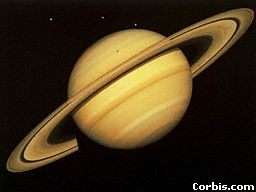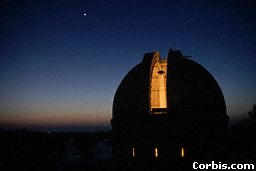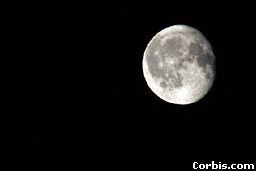

 I looked into the eyepiece of the
telescope, and there was Saturn. It looked nothing like pictures I had seen in National
Geographic, showing swirls of colour and distinct rings. It was more like a little ball of
plasticine suspended in the diorama of the universe. Although this was my first experience
with the observatory at York, on a high school field trip, I later viewed sunspots from
there as a first year astronomy major. In fact, anyone can have access to the observatory,
whether students or members of the community. Everyone is welcome to public viewing
Wednesday evenings. You can see the wonders of the universe through one of York's two
telescopes, or you can watch a slide show or special presentation. Even if the sky is too
cloudy for viewing, there will be exciting indoor activities.
I looked into the eyepiece of the
telescope, and there was Saturn. It looked nothing like pictures I had seen in National
Geographic, showing swirls of colour and distinct rings. It was more like a little ball of
plasticine suspended in the diorama of the universe. Although this was my first experience
with the observatory at York, on a high school field trip, I later viewed sunspots from
there as a first year astronomy major. In fact, anyone can have access to the observatory,
whether students or members of the community. Everyone is welcome to public viewing
Wednesday evenings. You can see the wonders of the universe through one of York's two
telescopes, or you can watch a slide show or special presentation. Even if the sky is too
cloudy for viewing, there will be exciting indoor activities.
 Soon you can view our solar system's largest planet, Jupiter, from the
observatory. Shortly after that, you can see Saturn, like I had the pleasure of doing
years ago. In early October, the Orion Nebula, a birthplace of stars, will be visible.
Soon you can view our solar system's largest planet, Jupiter, from the
observatory. Shortly after that, you can see Saturn, like I had the pleasure of doing
years ago. In early October, the Orion Nebula, a birthplace of stars, will be visible.
 The
observatory is open to the public Wednesday evenings, from 8:00 to 10:30 P.M. in September
and October, and 6:30 to 8:30 P.M. from November to March. Admission is free, although
donations to the observatory are always welcome. For more information you can call the
information line at (416) 736-2100 x77773, or you can visit the web site at http://aries.phys.yorku.ca/~delaney. You
can get to the observatory from the third floor of the Petrie Science Building. Your
window to the universe is only a short walk away, so while you are on campus, you should
spend an evening exploring the grandeur of space.
The
observatory is open to the public Wednesday evenings, from 8:00 to 10:30 P.M. in September
and October, and 6:30 to 8:30 P.M. from November to March. Admission is free, although
donations to the observatory are always welcome. For more information you can call the
information line at (416) 736-2100 x77773, or you can visit the web site at http://aries.phys.yorku.ca/~delaney. You
can get to the observatory from the third floor of the Petrie Science Building. Your
window to the universe is only a short walk away, so while you are on campus, you should
spend an evening exploring the grandeur of space.
September 1999
| Home | Chemistry | Physics | Astronomy | Biology | Ecology |
| Geography | Medicine | Mathematics | Technology |
| Issues | Scientists | General | Reference |
Last Updated Sunday, August 26, 2007 23:30 -0400
� Suzanne P. Currie 1999 [email protected]